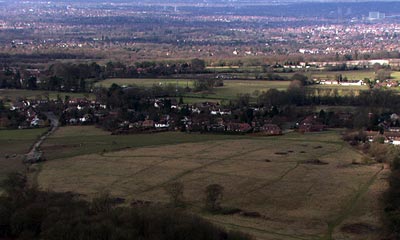'Elastic band' green belt claim
The Tories are accusing ministers of turning the green belt into an "elastic band" as a study suggests 84% of people oppose building on undeveloped land.
Mori interviewed 931 people in England between 30 June and 4 July 2005 for the Campaign to Protect Rural England.

The results are revealed on the 50th anniversary of the first government circular telling councils to look at designating areas of green belt land.
But ministers insist the green belt is being "maintained and increased".
They say there are controls to stop inappropriate development in green belt areas.
Campaign to Protect Rural England (CPRE) head of planning Henry Oliver said it was "under threat as never before".
He blamed "government plans for massive housing growth" in south-east England, "speculators selling plots to gullible investors for silly prices way above agricultural value", and proposed new roads and airport runways.
These "cast a concrete blight over some of the finest countryside within easy reach of big urban areas" and threatened "to relax the belt that has held the line against urban sprawl for decades", Mr Oliver added.
"Green belts need to be resolutely defended from these threats, yet even professional planners, who should be their strongest defenders, sometimes scoff at green belts as too simple and too restrictive to be a proper planning tool.
"They and the government need to listen to the vast majority of people, who as our poll shows, are green belt fans."
CPRE members will walk London's green belt on 21 August.
In September, they will cycle through the West Midlands, Gloucester, Cheltenham, Cambridge, Oxford and London green belts.
The government says the total area of green belt land in England has increased by about 19,000 hectares (47,000 acres) since 1997, with about a further potential 12,000 hectares (29,640 acres) proposed in emerging local plans.
"Nationally, a record 70% of all new building is now on brown-field land compared with 56% in 1997.
'Girdle'
Conservative shadow local government secretary Caroline Spelman said green belt had increased in areas where there was little development pressure.
But it had been removed in areas of high housing demand, with 2,500 acres of green belt built over each year.
"The green belt should be a girdle but what we have seen in the last eight years is that it has been made into an elastic band," she said.
Phil Woolas, a minister in the Office of the Deputy Prime Minister spokesman, said 70% of new developments were on previously developed brownfield sites.
He said: "Our policy is to strengthen the green belt and to ensure that is a regional criteria, not a national criteria to avoid the problem that there may be a shift to the other regions outside the South East."
bbc.co.uk, 3rd Aug, 2005
